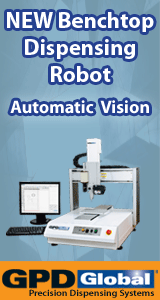Printed Circuit Board Assembly & PCB Design Forum
SMT electronics assembly manufacturing forum.
- SMTnet
- »
- Electronics Forum
- »
- Reflow Profiling - Cooling Rate?
Reflow Profiling - Cooling Rate?
Views: 2552
![]() Who's controlling the cooling rate when profiling? If so, w...
- Jan 31, 2020
by
dontfeedphils
Who's controlling the cooling rate when profiling? If so, w...
- Jan 31, 2020
by
dontfeedphils
![]()
![]()
![]() We never really "controlled" it, per-se...more a f...
- Feb 03, 2020
by
robgd3
We never really "controlled" it, per-se...more a f...
- Feb 03, 2020
by
robgd3
![]()
![]()
![]() A few lifetimes ago I went to a seminar on reflow profiles.
...
- Feb 03, 2020
by
Stephen
A few lifetimes ago I went to a seminar on reflow profiles.
...
- Feb 03, 2020
by
Stephen
![]()
![]()
![]() Reason I ask is because I've never really paid much attentio...
- Feb 03, 2020
by
dontfeedphils
Reason I ask is because I've never really paid much attentio...
- Feb 03, 2020
by
dontfeedphils
![]()
![]()
![]() There are two areas that are important when discussing cooli...
- Feb 04, 2020
by
Fred Dimock
There are two areas that are important when discussing cooli...
- Feb 04, 2020
by
Fred Dimock
![]()
![]()
![]() Hello Phil,
As the other respondents have mentioned, the co...
- Feb 10, 2020
by
SMTA-Tony
Hello Phil,
As the other respondents have mentioned, the co...
- Feb 10, 2020
by
SMTA-Tony
![]()
![]() SMTA
SMTA
![]()
![]() on 10 zone ovens with 3 cooling zones, my negative slope is ...
- Feb 10, 2020
by
Evtimov
on 10 zone ovens with 3 cooling zones, my negative slope is ...
- Feb 10, 2020
by
Evtimov
![]()
![]()
![]() The ideal cooling zone curve should be a mirror
image of the...
- Apr 22, 2020
by
SMTA-Samy
The ideal cooling zone curve should be a mirror
image of the...
- Apr 22, 2020
by
SMTA-Samy
![]()
![]() SMTA
SMTA
![]()
![]() This is the first time I heard that the heating and cooling ...
- Apr 23, 2020
by
Fred Dimock
This is the first time I heard that the heating and cooling ...
- Apr 23, 2020
by
Fred Dimock
![]()
- SMTnet
- »
- Electronics Forum
- »
- Reflow Profiling - Cooling Rate?








